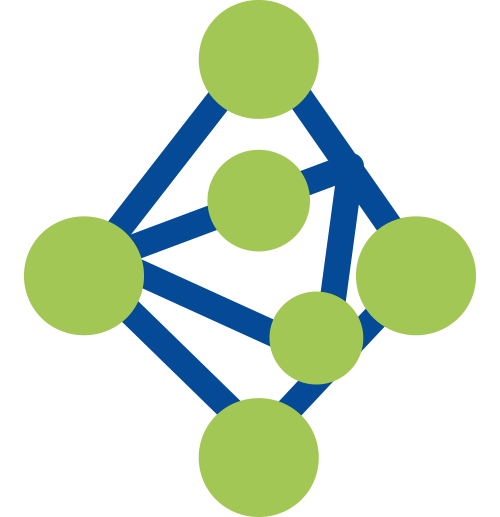The efficacy and specificity of CRISPR-Cas genome editing technology fundamentally depend on the design of single guide RNAs (sgRNAs) that direct nucleases to intended genomic targets. While CRISPR systems offer unprecedented precision in genome manipulation, off-target effects remain a significant challenge that can compromise experimental outcomes and therapeutic applications. This article examines cutting-edge approaches to sgRNA library construction that minimize off-target activities while maintaining robust on-target efficiency.
Molecular Foundations of Off-Target Activity
Understanding Off-Target Mechanisms
Off-target effects in CRISPR systems occur when the Cas nuclease cleaves DNA at sites that differ from the intended target sequence. These unintended modifications arise primarily due to the tolerance of CRISPR-Cas systems for mismatches between the guide RNA and target DNA sequences. The tolerance for mismatches varies based on:
- Position-dependent effects: Mismatches in the PAM-proximal region (seed sequence) significantly reduce binding affinity compared to mismatches in PAM-distal regions
- Number of mismatches: Multiple mismatches generally reduce off-target activity, though certain combinations may still permit cleavage
- Type of mismatches: Some nucleotide substitutions disrupt binding more effectively than others
Understanding these fundamental principles provides the foundation for designing sgRNA libraries with enhanced specificity profiles.
Critical Design Parameters
When designing sgRNAs, several key parameters must be optimized to minimize off-target activity. As highlighted in Dynegene's guide "The Art of sgRNA Library Construction: A Step-by-Step Journey", these include:
- GC content optimization: Maintaining GC content between 40-60% ensures appropriate binding thermodynamics
- Secondary structure minimization: Avoiding hairpins and self-complementary sequences that could impair guide function
- Sequence uniqueness: Ensuring target sequences have minimal similarity to other genomic regions
- PAM-adjacent sequence selection: Carefully evaluating the sequence context surrounding the PAM site
Advanced Computational Design Strategies
Modern sgRNA design relies on sophisticated computational algorithms that incorporate extensive empirical data on CRISPR-Cas activity patterns. These algorithms evaluate potential guide sequences based on multiple parameters to predict both on-target efficiency and off-target potential.
Innovative Design Approaches for Enhanced Specificity
Dual-sgRNA Strategies
One powerful approach for minimizing off-target effects involves the use of multiple guides targeting the same gene. As outlined in "Boost CRISPR Efficiency with Optimized Dual-sgRNA Libraries", this strategy provides several advantages:
- Multiple distinct sgRNAs target different regions of the same gene
- Each guide is designed to have non-overlapping off-target profiles
- The likelihood of all guides sharing the same off-target sites is extremely low
This approach is particularly valuable for genome-wide screening applications, where distinguishing true hits from off-target artifacts is critical.
Modified Guide RNA Architectures
Several structural modifications to standard sgRNAs have demonstrated improved specificity profiles. These include:
- Truncated guide RNAs: Guides with 17-18 nucleotides (versus standard 20nt) show reduced off-target activity while maintaining on-target efficiency
- Chemical modifications: Strategic nucleotide modifications that alter thermodynamic properties of RNA-DNA interactions
- Structural variants: Modified scaffold sequences that enhance Cas9 binding and improve specificity
Application-Specific Design Considerations
Genome-Wide Screening Applications
For genome-wide screens, the design requirements often emphasize comprehensive coverage and statistical robustness. According to Dynegene's "The Ultimate Guide to Designing and Screening CRISPR sgRNA Libraries", key considerations include:
- Incorporating multiple sgRNAs per gene (typically 4-10) to enable robust statistical analysis
- Ensuring balanced representation across the library to avoid sampling bias
- Implementing appropriate controls to distinguish true hits from off-target effects
In large-scale screening applications where thousands of cells are analyzed per sgRNA, modest off-target frequencies (e.g., 5%) may have minimal impact on overall results. However, maintaining high specificity remains important for identifying true biological effects.
Therapeutic Applications
For therapeutic applications, the specificity requirements become significantly more stringent. Even low-frequency off-target events could have serious consequences in clinical settings. Design approaches for therapeutic sgRNAs typically implement:
- More conservative specificity thresholds
- Additional experimental validation steps
- Consideration of potential functional consequences of predicted off-target sites
Future Directions
The field of sgRNA design continues to evolve rapidly, with several promising directions for further enhancing specificity:
- Integration of machine learning approaches trained on large empirical datasets
- Incorporation of chromatin accessibility and epigenetic data into prediction algorithms
- Development of new Cas variants with inherently higher specificity
- Novel delivery methods that reduce the duration of Cas9 expression and limit the window for off-target activity
Conclusion
Constructing CRISPR sgRNA libraries with minimized off-target effects requires a sophisticated approach that integrates computational design, molecular engineering, and rigorous validation. Key considerations include:
1. Implementing comprehensive computational specificity scoring to filter problematic guides
2. Employing multiple sgRNAs per target with non-overlapping off-target profiles
3. Utilizing modified guide architectures or alternative CRISPR systems for enhanced specificity
4. Conducting appropriate experimental validation to confirm specificity profiles
5. Adapting design criteria to application-specific requirements
By following these principles and leveraging the advanced design tools and services, researchers can create CRISPR sgRNA libraries that maximize the potential of genome editing technology while minimizing unintended effects. As computational prediction algorithms and experimental validation methods continue to improve, the specificity and reliability of CRISPR applications will further advance, expanding the utility of this transformative technology in both research and therapeutic contexts.
 NGSHybridization Capture DNA Probe QuarStar Human All Exon Probes 4.0 (Tumor) QuarStar Human All Exon Probes 4.0 (Standard) QuarStar Liquid Pan-Cancer Panel 3.0 QuarStar Pan-Cancer Lite Panel 3.0 QuarStar Pan-Cancer Fusion Panel 1.0 QuarStar Pan Cancer Panel 1.0 Hybridization Capture RNA Probe QuarXeq Human All Exon Probes 3.0 HRD panel Library Preparation DNA Library Preparation Kit Fragmentation Reagent mRNA Capture Kit rRNA Depletion Kit QuarPro Superfast T4 DNA Ligase Hybridization Capture QuarHyb Super DNA Reagent Kit QuarHyb DNA Plus 2 Reagent Kit QuarHyb DNA Reagent Kit Plus QuarHyb One Reagent Kit QuarHyb Super Reagent Kit Pro Dynegene Adapter Family Dynegene Blocker Family Multiplex PCR QuarMultiple BRCA Amplicon QuarMultiple PCR Capture Kit 2.0 PathoSeq 450 Pathogen Library Corollary Reagent Streptavidin magnetic beads Equipment and Software The iQuars50 NGS Prep System
NGSHybridization Capture DNA Probe QuarStar Human All Exon Probes 4.0 (Tumor) QuarStar Human All Exon Probes 4.0 (Standard) QuarStar Liquid Pan-Cancer Panel 3.0 QuarStar Pan-Cancer Lite Panel 3.0 QuarStar Pan-Cancer Fusion Panel 1.0 QuarStar Pan Cancer Panel 1.0 Hybridization Capture RNA Probe QuarXeq Human All Exon Probes 3.0 HRD panel Library Preparation DNA Library Preparation Kit Fragmentation Reagent mRNA Capture Kit rRNA Depletion Kit QuarPro Superfast T4 DNA Ligase Hybridization Capture QuarHyb Super DNA Reagent Kit QuarHyb DNA Plus 2 Reagent Kit QuarHyb DNA Reagent Kit Plus QuarHyb One Reagent Kit QuarHyb Super Reagent Kit Pro Dynegene Adapter Family Dynegene Blocker Family Multiplex PCR QuarMultiple BRCA Amplicon QuarMultiple PCR Capture Kit 2.0 PathoSeq 450 Pathogen Library Corollary Reagent Streptavidin magnetic beads Equipment and Software The iQuars50 NGS Prep System Primers and Probes
Primers and Probes RNA SynthesissgRNA miRNA siRNA
RNA SynthesissgRNA miRNA siRNA



 Gene Synthesis
Gene Synthesis Oligo Pools
Oligo Pools CRISPR sgRNA Library
CRISPR sgRNA Library Antibody Library
Antibody Library Variant Library
Variant Library


 Tel: 400-017-9077
Tel: 400-017-9077 Address: Floor 2, Building 5, No. 248 Guanghua Road, Minhang District, Shanghai
Address: Floor 2, Building 5, No. 248 Guanghua Road, Minhang District, Shanghai Email:
Email: Tel: 400-017-9077
Tel: 400-017-9077 Address: Floor 2, Building 5, No. 248 Guanghua Road, Minhang District, Shanghai
Address: Floor 2, Building 5, No. 248 Guanghua Road, Minhang District, Shanghai Email:
Email: 







